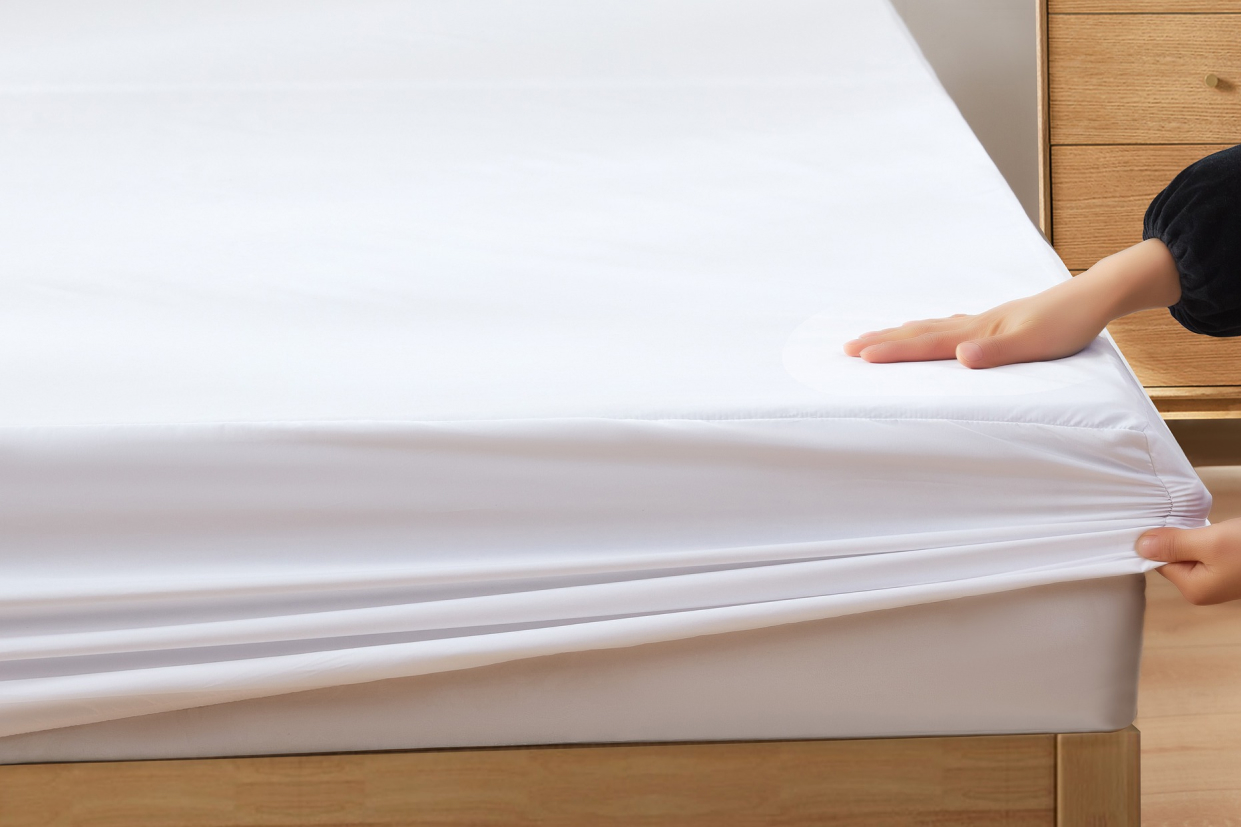How To Wash Mattress Protector

Washing your mattress cover properly won't harm it in the slightest and can protect your mattress from dust mites and other bacteria that could aggravate your allergies or make you ill. To find out how to properly wash your mattress protector, keep reading!
Your mattress is covered and enclosed by a piece of washable material called a mattress protector. They are typically used to extend the life of mattresses or to swap out worn-out ones. Although there are many various kinds of mattress covers, they all keep your mattress dry and clean.
How To Wash Mattress Protector Properly
The best way to wash a mattress protector is by hand or in the washer, depending on which type you have. You can also consider using either vinegar or baking soda as a detergent because it will kill odors and bacteria.
Follow this step-by-step tutorial on how to clean a mattress protector in the bath:
- Your mattress protector should be unzipped and the fitted sheet removed from the bed.
- Use a vacuum cleaner to try and get rid of any dust or hair from the protector's surface.
- Fill the bathtub with cool water, then add a small amount of mild detergent (such as Woolite) and mix it well until it is dissolved completely. Alternatively, use a specific mattress cleaning solution if you have one available in your home or apartment.
- Put your mattress protector in the bathtub and drench it for about 15 minutes. Then, if required, add extra water to completely cover all of the protector's surface regions.
- Use clean hands or a sponge to rub off any dirt on the surface of the mattress protector, but do not scrub too hard, or else you may damage its waterproof layer and increase its rate of wear and tear over time.
Utilizing A Washing Machine To Clean A Mattress Protector
Your mattress will stay fresh and clean if you use a mattress protector. Additionally, it shields the mattress from spills and stains. Instead of replacing your usual bedding, a mattress protector adds an extra layer of security that can help your mattress last longer.
You must exercise caution while washing mattress coverings since they may be costly and challenging to clean. To launder a mattress protector, follow these directions:
Follow these steps and tips for washing a mattress protector:
- Make sure that only cold water is used in your washing machine. Use about half the recommended quantity of detergent on the gentle cycle. The mild cycle will lessen rubbing and wear on the fabric and stitching between the mattress protector and other laundry items.
- Remove all bedding from your bed before washing it so you don't accidentally wash away any stains or dirt that might cause problems later on during laundering.
- Remove any metal frame parts or other accessories that are not part of your bed frame before starting to launder your mattress protector so they don't get tangled in any moving parts while in motion inside the washer drum during its spin cycle — this could damage them irreparably!
Disinfecting A Mattress Protector
Whether you have a mattress protector or not, it is important to know how to disinfect your bed. It is true that some mattress protectors are designed for easy cleaning and disinfecting. However, if you do not have one of these types of protectors, you can still clean your mattress effectively.
Have you ever wondered how many germs live on the average mattress? According to research conducted by the U.S. Environmental Protection Agency (EPA), there are about 10 million bacteria per square inch on a typical mattress! These germs include fecal matter from pets and humans, as well as dust mites, mold spores, pollen, and more. Some of these germs can cause respiratory problems while others may lead to serious illnesses such as pneumonia or meningitis.
For this reason, it is crucial that you keep your bed clean and free of germs at all times. Vacuuming alone will not remove all of these germs because they tend to hide in the crevices between your mattress and box spring. In addition, vacuuming alone will not kill off any living organisms that may be present in these areas either because they are too small for vacuuming machines or because they require direct contact with chemicals.
Benefits Of Mattress Protectors
Mattress protectors are a great way to keep your mattress clean and prolong the life of your mattress. They are typically made from plastic, but some are made of cotton and other fabrics.
You can choose from a variety of colors, patterns, and thicknesses when it comes to buying a mattress protector. Some even have extra features like hypoallergenic properties or breathability.
A bed protector's primary function is to safeguard your mattress from spills that might encourage the formation of mould or mildew. Dust mites, which in certain people can cause allergies, are also kept away from the mattress with the use of this.
Mattress protectors come in various types:
- Waterproofing mattress protectors - These provide complete protection against fluids such as urine and blood, which could be dangerous if left on your bed for too long without cleaning them off first.
These are a good choice if you have children who wet their beds at night or someone who may suffer from incontinence issues due to age or illness. Waterproof protectors will keep any liquids contained inside the protector until they're cleaned up so they won't damage your mattress underneath it at all!
- Breathable - Breathable protectors let air flow through so that moisture doesn't build up inside of them while you sleep.
Final Thoughts
A mattress protector is a great way to prevent spills and other damage that can occur to your bed. By cleaning one on a regular basis, you’re ensuring your mattress will have an increased and extended lifespan.


